Bowler's Academy
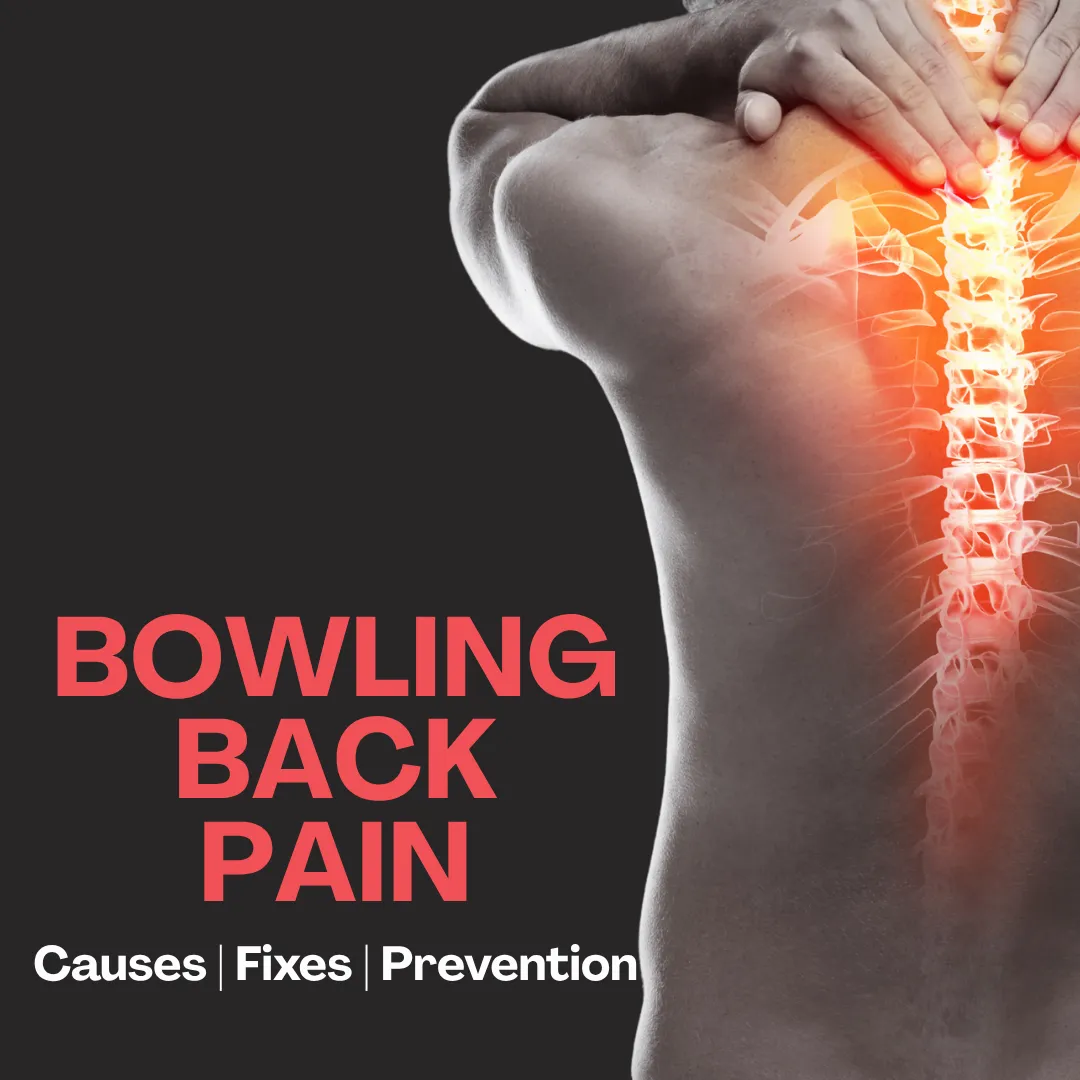
Bowling Back Pain: Prevention and Relief Tips That Work
Back pain has become one of the most common physical issues in the 21stcentury. And bowling, unfortunately, is no exception. Bowling back pain is more common than most think. Many bowlers deal withsoreness, stiffness, or serious injury. If left untreated, it can ruin yourgame, cause missed tournaments, or lead to long-term issues. In this article, you’ll learn what causes bowling back pain and how to preventit. We’ll also cover proven tips to manage pain and stay strong on the lanes. Please note: Some links in this article may be affiliate links. We may earna small commission to support our work, at no extra cost to you. Causes of Bowling Back Pain Bowling forces your body to move in an uneven way. Most of the strain goes toyour dominant side. This causes a muscular imbalance - one side becomesoverused while the other stays weak. Over time, that imbalance puts pressure on your spine and lower back. It’s oneof the most common causes of bowling back pain. Another major cause is muscle strain. A sudden or forceful movement - such asan overextension during a release - can lead to painful strain. It may alsotear the muscles, ligaments, or tendons in the lower back. Bowling players are professional athletes, so injuries are inevitable. Bowlersoften rush to get back on the lanes, so past injuries that have not healed yetcan also cause bowling back pain. Eventually, poor mechanics cause more strain. One small issue can triggersoreness in other parts of the body. Ignoring these early signs often leads tolong-term bowling back pain. How to Prevent and Relieve Bowling Back Pain Every bowler should be proactive in caring for their physical health. Here arefive essential strategies to help reduce and manage bowling back pain. 1. Therapeutic treatment A medical expert is always the best option to treat bowling back pain.Depending on your condition, the therapist will design a personal plan. It mayinclude stretching, strength, coordination, and relaxation exercises. Thesetargeted movements help eliminate the root causes of bowling back pain. 2. Exercising Exercising just 15 minutes a day can strengthen your core and back muscles.This helps prevent muscular imbalance and reduces the risk of bowling backpain. You don’t need a gym membership. Low-impact activities like walking,cycling, or at-home core workouts are more than enough. 3. Stretching Starting your bowling game or tournament without stretching is a big mistake.It puts unnecessary strain on your muscles. Lack of stretching reducesperformance and increases the risk of joint pain and muscle damage. Do basicstretches at least 20 minutes before the game to prevent bowling back pain. 4. Heat & Ice treatment Applying a cold pack on your back can help relieve pain and reduceinflammation. It also improves mobility after bowling. Cold therapy is greatcare for your body after a long day at the lanes. For best results, apply coldfor 15 minutes several times within 24 hours after bowling. Then switch toheat therapy using a heat pad or hot tub. This loosens tight back muscles andeases bowling back pain. We recommend using Reusable Hot&Cold Teraphy Pack. Reusable Hot&Cold Teraphy Pack Alternatively, for deeper muscle recovery, you can also use amassage gun. Designed for athletes, this massage gun helps release tight fascia, reducesoreness, and improve recovery time. We recommend usingTheraGunbecouse it is powerful yet very easy to use. massage gun TheraGun 5. Maintain a healthy weight Excess body weight puts extra strain on the lower back. For bowlers, it canshift the pelvis forward and affect balance. This change increases the risk ofpain or injury. Maintaining a healthy weight through good nutrition andregular activity supports long-term back health. A balanced lifestyle alsohelps prevent bowling back pain. Conclusion on Bowling Back Pain Bowling back pain doesn’t have to stop you from playing the sport you love.Most cases improve with smart habits and consistent care. Focus on proper warm-ups, strength work, and recovery after each game. Listento your body and rest when needed. Ignoring the pain can turn a small probleminto a long-term issue. If your pain continues, seek help from a physical therapist or sports doctor.With the right care and determination, you can return to the lanes strongerthan before. Want to protect your whole body while bowling? Check out our guide to theBest Bowling Shoes of 2025 - the right shoes can help prevent pain from head to toe! Best Bowling Shoes of 2025 - Best Bowling Shoes of 2025
Health & Nutrition
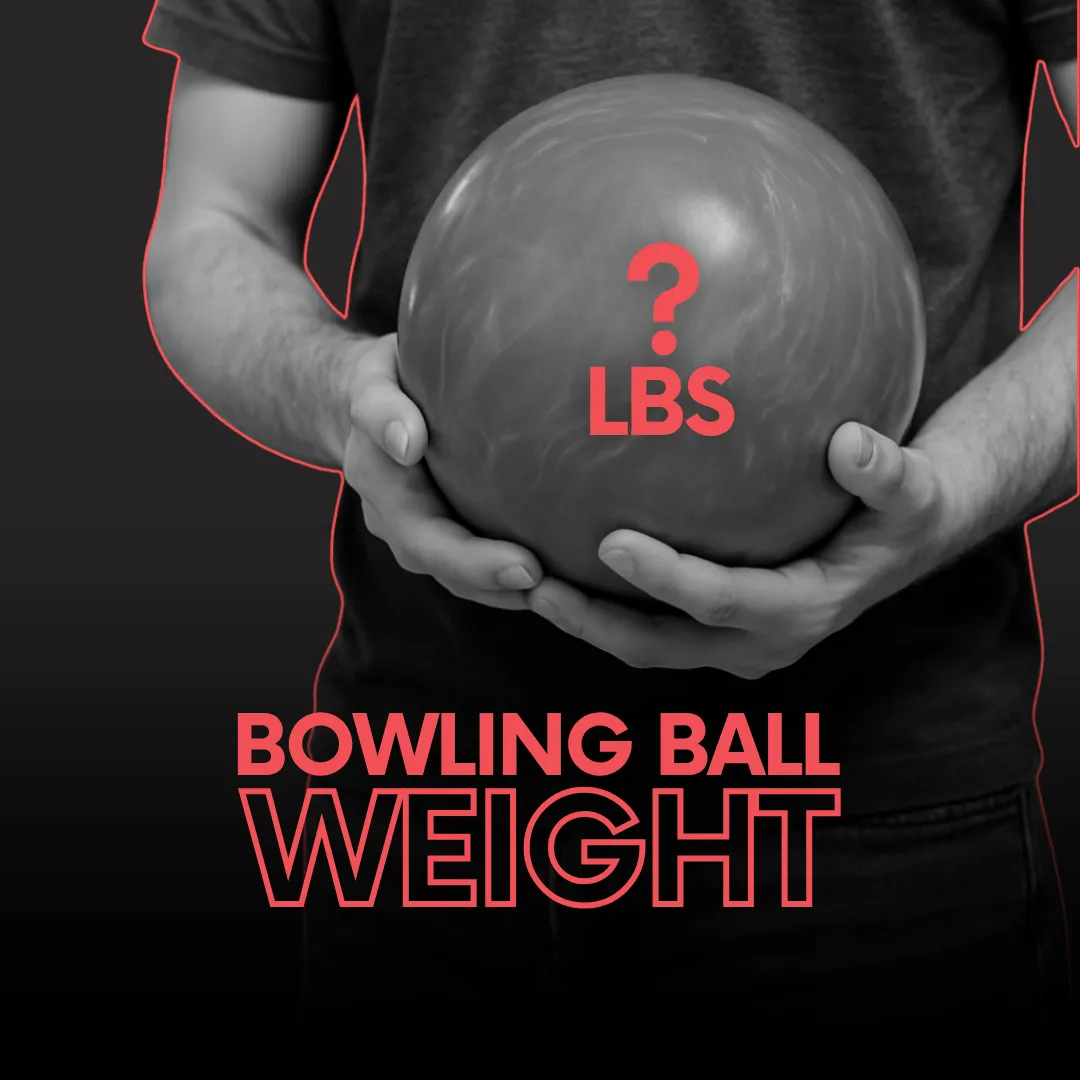
Best Bowling Ball Weight Guide: How to Choose the Right Weight
Choosing the right bowling ball weight plays a big role in your scores,comfort, and long-term progress. Many bowlers start with a random house ball,while others try the heaviest ball they can lift, hoping for more strikes. Both approaches often lead toback pain, bad shots, and poor results. back pain This guide explains how bowling ball weight affects your game. You will learnhow to choose the right weight for your body, strength, and experience. Youwill also find real examples, simple rules, and practical tips you can usenext time you go bowling. If you already know your bowling ball weight and want more help choosingbowling balls, you can also read ourBest Bowling Balls 2025 andBest Bowling Ball for Beginners reviews! Best Bowling Balls 2025 Best Bowling Ball for Beginners Some links on this page are affiliate links. If you purchase through them,BowlingLife might earn a small commission that helps support our work, at noextra cost to you. Why Bowling Ball Weight Matters The right bowling ball weight helps you to stay consistent, score better, andkeep your body safe. A ball that is too heavy reduces yourbowling ball speedand accuracy. On the other hand, a ball that is too light reduces pin action. bowling ball speed Weight affects four main things: Your shot speedYour controlYour timingYour stamina over many games Your shot speed Your control Your timing Your stamina over many games When the weight matches your strength, your shots stay steady from the firstto the last frame. What Is the Heaviest Bowling Ball Weight? The heaviest legal bowling ball weight is 16 pounds under USBC rules. However,some bowlers havemade homemade bowling balls that weigh up to 20 pounds. made homemade bowling balls that weigh up to 20 pounds Many bowlers think they must throw 16 pounds to score well. That is not true.Most bowlers use bowling balls between 12 and 15 pounds. The best weightdepends on age, physique, and grip. Bowling Ball Weight Chart This simple bowling ball weight chart gives you a clear starting point. Bowler TypeSuggested WeightKids under 86–8 lbKids 9–119–11 lbTeens12–14 lbAdult Women12–15 lbAdult Men15–16 lbSenior Bowlers13–15 lb Bowler TypeSuggested Weight Bowler Type Suggested Weight Kids under 86–8 lb Kids under 8 6–8 lb Kids 9–119–11 lb Kids 9–11 9–11 lb Teens12–14 lb Teens 12–14 lb Adult Women12–15 lb Adult Women 12–15 lb Adult Men15–16 lb Adult Men 15–16 lb Senior Bowlers13–15 lb Senior Bowlers 13–15 lb These numbers are not strict rules. They help you find a ball that feels goodfrom the first shot. How to Choose Your Bowling Ball Weight Choosing the right bowling ball weight comes down to feel, comfort, andcontrol. You want a ball that gives strong pin action without hurting yourbody. A simple method is this: Divide your body weight (in pounds) by 11. Example:150 lbs ÷ 11 = 13.6 → start with a 13 or 14 lb ball. This number is only a starting point. You then adjust based on how your bodyreacts. Signs Your Bowling Ball Weight Is Too Heavy Your bowling ball weight is too heavy if: Your grip is too looseYour wrist or elbow feels stressedYour ball speed drops fastYou lose control during the swing Your grip is too loose Your wrist or elbow feels stressed Your ball speed drops fast You lose control during the swing A heavy ball may give strong hits, but only when you can handle the weight. Ifyou cannot keep your speed, a lighter ball will score better. Signs Your Bowling Ball Weight Is Too Light Your bowling ball weight is too light if: You feel like you are “tossing” instead of swingingYou throw too fast and lose controlYou get weak pin actionYour ball deflects too much You feel like you are “tossing” instead of swinging You throw too fast and lose control You get weak pin action Your ball deflects too much If these signs match your game, try heavier bowling ball. Bowling Ball Weight for Kids and Teens Kids and teens need a bowling ball weight that protects their hands andwrists. Choose a weight that feels smooth and safe. Do not force heavier ballson young players. Their muscles and joints are still developing. Most young bowlers stay between: 6–11 lb for kids2–14 lb for teens 6–11 lb for kids 2–14 lb for teens Comfort and proper form matter more than weight at this stage. What Bowling Ball Weight Do Pros Use? Pro players do not use bowling balls you can fing in bowling alley. They usehigh-erformance bowling balls, that is pecifically drilled to their handmeasurements. Having a good grip allows to throw heavier bowling balls. Most male pros use 15-pound balls. Some use 16 pounds, but this number is muchlower. Meanwhile, most female pros use 14 or 15 pounds. House Balls vs Custom Balls and Bowling Ball Weight As we mentioned before, house balls often feel heavier because the holes nevermatch your hand perfectly. You grip harder, your swing gets tight, and yourarm gets tired fast. It all affects your accuracy. A custom-drilled ball spreads weight across your hand. This makes the samebowling ball weight feel lighter. Many bowlers can easily handle a ball 2–3 pounds heavier when it is drilledfor their hand. How to Test and Find Your Ideal Bowling Ball Weight Try this simple method: Start with a weight that feels safe (for example 11-12 lbs).Throw 5–6 shots.Move up or down based on feel. Start with a weight that feels safe (for example 11-12 lbs). Throw 5–6 shots. Move up or down based on feel. Your ideal bowling ball weight should: Feel smooth during the swingKeep your speed steadyAvoid pain and sorenessGive strong pin actionLet you bowl many games without fatigue Feel smooth during the swing Keep your speed steady Avoid pain and soreness Give strong pin action Let you bowl many games without fatigue Listen to your body. It will tell you when the weight is right. Experiment, Listen to Your Body, and Build Up Slowly Your ideal bowling ball weight may change over time. As you get stronger, youmay move up in weight. You may also stay at one weight for years. Both pathsare fine. Stay patient and pay attention to your body. Do not force heavy weights toosoon. Smooth progress always wins. If you want more help choosing bowling balls, see our Best Bowling Balls2025 guide!
Tips & Tricks
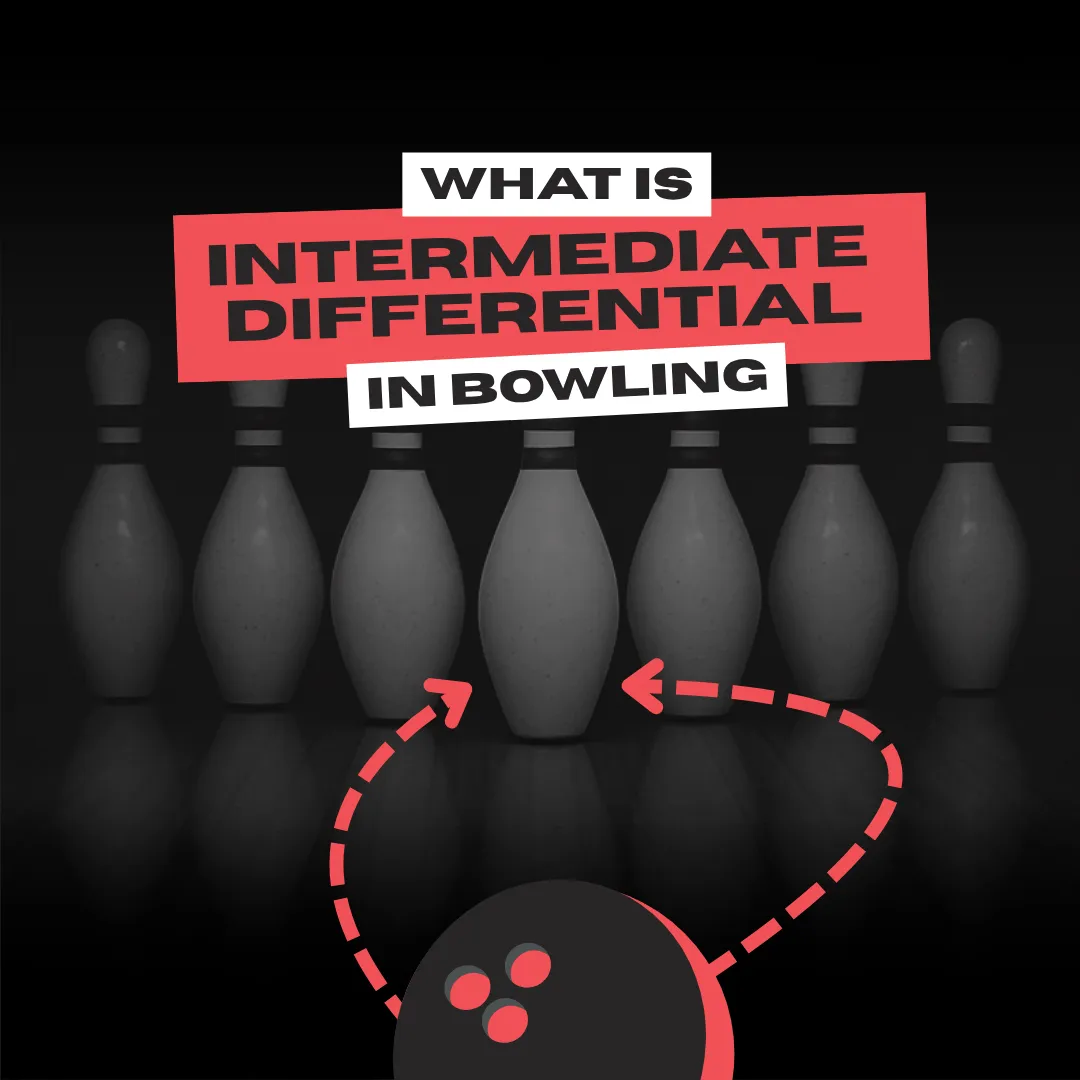
Intermediate Differential in Bowling: How It Affects Ball Motion
Understanding core numbers can help every bowler make better choices. One ofthe most important numbers is intermediate differential. Many bowlers know aboutradius of gyration (RG) anddifferential (diff), but intermediate differential often feels confusing. radius of gyration (RG) differential (diff) Intermediate differential plays a big role in how an asymmetrical bowling ballchanges direction. It also helps you understand which ball shape matches yourstyle and speed. This guide will explain intermediate differential in simple words and show howit affects your bowling ball motion on the lane. What Is Intermediate Differential in Bowling? Intermediate differential measures the difference between the high RG axis andthe intermediate RG axis of a bowling ball. This value exists only inasymmetrical bowling balls, since symmetrical balls have almost no coreasymmetry. A symmetrical bowling ball has two RG values: the minimum RG and the maximumRG. An asymmetrical bowling ball has three RG values. The third value is theintermediate RG, which sits between the low and high RG axes. Because of thisthird value, an asymmetrical ball has an intermediate differential number. Intermediate differential can also be explained as the difference between theball’s high RG axis and its intermediate RG axis. This value is also known asthe mass bias strength. A higher intermediate differential means a strongermass bias. A lower value means weaker mass bias. Intermediate Differential Ranges in Bowling Most intermediate differential values fall between 0.008 and 0.037 inches. Ifa ball’s intermediate differential sits above 0.008, the ball is consideredasymmetrical. If a ball's intermediate differential sits below, then it isconsidered symmetrical. The ranges are: Symmetrical balls: 0.000–0.007Low intermediate differential: 0.008–0.020High intermediate differential: 0.021–0.037 Symmetrical balls: 0.000–0.007 Low intermediate differential: 0.008–0.020 High intermediate differential: 0.021–0.037 These numbers matter because they show how fast a ball responds to frictionand how quickly it changes direction. How Intermediate Differential Affects Bowling Ball Motion Intermediate differential shapes your bowling ball’s motion from the mid-laneto the pins. It does not change how much the ball hooks overall. Instead, itchanges the ball hooks. Higher intermediate differential creates faster changes A higher intermediate differential makes the ball react faster when it touchesfriction. The hook zone becomes shorter but stronger. The ball changes fromskid to hook in a very sharp way. This often creates a strong and suddenbackend motion. The ball turns fast, uses energy quickly, and may hit the pinshard if matched correctly. Lower intermediate differential creates smoother changes A lower intermediate differential creates a longer and smoother hook zone. Theball changes direction more slowly. The backend motion becomes more gradual.This helps the ball keep more energy for the pins and improves control. Both motions can strike well. The key is matching the intermediatedifferential to your style and lane conditions. Intermediate Differential vs Differential Many bowlers confuse differential and intermediate differential. They are notthe same. Differential measures the difference between the lowest RG axis and thehighest RG axis. This number shows how much the ball can flare and how manyboards it can cover. Intermediate differential measures the difference between the intermediate RGand the high RG. This number shows how fast the ball responds to friction andhow the hook shape develops. A simple way to remember the difference: Differential = amount of hookIntermediate differential = shape of hook Differential = amount of hook Intermediate differential = shape of hook Both work together, but intermediate differential gives the ball its uniquemotion shape. Symmetrical vs Asymmetrical Bowling Balls The type of core determines whether a ball has intermediate differential. Symmetrical bowling balls Have no meaningful intermediate differential.Create smooth and predictable motion.Work well for rev-dominant bowlers and slower speeds.Offer fewer layout changes since they lack a strong preferred spin axis(PSA).Symmetrical balls usually are more stable and easier to control. Have no meaningful intermediate differential. Create smooth and predictable motion. Work well for rev-dominant bowlers and slower speeds. Offer fewer layout changes since they lack a strong preferred spin axis(PSA). Symmetrical balls usually are more stable and easier to control. Asymmetrical bowling balls Have a real intermediate differential numberRespond faster to frictionCreate sharper and more angular motionWork well for speed-dominant playersOffer many layout options because the PSA is strongerThe added intermediate differential gives more shape and more ways to adjustthe core’s position during drilling Have a real intermediate differential number Respond faster to friction Create sharper and more angular motion Work well for speed-dominant players Offer many layout options because the PSA is stronger The added intermediate differential gives more shape and more ways to adjustthe core’s position during drilling How Intermediate Differential Affects Spin Time and PSA Strength Intermediate differential controls the strength of the PSA. A higherintermediate differential creates a stronger PSA. A stronger PSA means fasterspin time. Faster spin time leads to a quicker hook. Here is the simple chain: Higher intermediate differential → stronger PSA → faster spin time → quickerhook This is why high intermediate differential balls snap harder off the spot.They release energy quickly and make a fast move toward the pocket. Lower intermediate differential balls spin slower and transition moregradually. This helps the ball keep energy. Which Bowlers Benefit From Higher Intermediate Differential? A higher intermediate differential gives faster motion. This helps thefollowing players: Speed-dominant bowlers who struggle to get the ball to slow downLow-rev bowlers who need help creating motionPlayers who want strong backend shapeBowlers on patterns with a clear downlane friction spot Speed-dominant bowlers who struggle to get the ball to slow down Low-rev bowlers who need help creating motion Players who want strong backend shape Bowlers on patterns with a clear downlane friction spot These bowlers need help forcing the ball to change direction. A higherintermediate differential makes the motion sharper. Which Bowlers Benefit From Lower Intermediate Differential? Lower intermediate differential gives a smoother and longer motion. Thishelps: Rev-dominant bowlers who already create strong hookLow-speed bowlers who do not want the ball to overreactSenior bowlers who prefer short-pin layouts or smoother shapesBowlers on wet-dry patterns who want to control the breakpointPlayers who need stable and predictable motion Rev-dominant bowlers who already create strong hook Low-speed bowlers who do not want the ball to overreact Senior bowlers who prefer short-pin layouts or smoother shapes Bowlers on wet-dry patterns who want to control the breakpoint Players who need stable and predictable motion Intermediate Differential and Oil Patterns Intermediate differential plays a big role on different oil patterns. When to use high intermediate differential A high intermediate differential delivers a sharper transition at thebreakpoint. It’s great for rev-dominant players or anyone trying to get morehook on heavy oil. The higher diff gives the ball more flare and shape,creating that sharp, more angular motion through the backend. When to use low intermediate differential Choose a low intermediate differential bowling ball if you’re looking for asmoother, more predictable reaction. It’s perfect when the lanes start to dryup, or when you don’t want the ball snapping too hard off the spot. It givesyou that nice arc shape and better control through transition. Intermediate Differential and Drilling Layouts Asymmetrical bowling balls allow more layout options because the PSA plays akey role. Moving the PSA changes how the ball responds to friction. A higher intermediate differential gives more layout freedom. You can placethe core in strong or mild positions. A lower intermediate differential creates fewer differences between layouts.The ball remains smoother and more stable. Short-pin layouts reduce core flare. This makes the ball act closer to asymmetrical shape. Many senior bowlers use these layouts for added control. Examples of Bowling Balls With Different Intermediate Differential Values To understand these numbers better, here are clear examples of balls with high and low intermediate differential values. High intermediate differential examples Hammer Pure EnvyEbonite The One Ovation Hammer Pure Envy Ebonite The One Ovation These balls create sharp and fast backend motion. Low intermediate differential examples Storm Ion Pro SolidHammer 3-D Offset Assault Storm Ion Pro Solid Hammer 3-D Offset Assault These balls create smooth and continuous motion. No intermediate differential (symmetrical balls) Brunswick AlertMotiv Primal Ghost Brunswick Alert Motiv Primal Ghost These balls offer stable and predictable motion on many conditions.Please note that some links in this article are affiliate links, whichmeans we may earn a small commission that helps support our work, at noextra cost to you. Please note that some links in this article are affiliate links, whichmeans we may earn a small commission that helps support our work, at noextra cost to you. FAQ What is intermediate differential in bowling? Intermediate differential in bowling is the difference between the ball’s highRGaxis and its intermediateRGaxis. It shows how much asymmetry the core has and how fast the ball respondsto friction. RG Do symmetric bowling balls have intermediate differential? Symmetrical bowling balls have almost no intermediate differential. Theirvalues sit between 0.000 and 0.007. This is not enough to create strongasymmetry. What does higher intermediate differential do? A higher intermediate differential creates a sharper and faster motion. Theball responds quickly to friction and changes direction fast. What does lower intermediate differential do? Lower intermediate differential gives a smoother and more controlled motion.The ball changes direction slowly and keeps more energy for the pins. How does intermediate differential differ from differential? Differential shows the total flare potential. Intermediate differential showshow fast the hook shape forms. One controls the amount of hook. The othercontrols the shape of hook. Is intermediate differential important for beginners? Beginners do not need to worry about intermediate differential. Coverstock andtotal differential are more important at early levels. Which bowlers should use high intermediate differential? High intermediate differential helps speed-dominant and low-rev players. Italso helps bowlers who need strong recovery on the backend. Which bowlers should use low intermediate differential? Low intermediate differential helps rev-dominant and low-speed players. Itgives predictable and continuous motion on many patterns. How does intermediate differential affect drilling layouts? Higher intermediate differential creates more layout options because the PSAis stronger. Lower intermediate differential reduces the impact of layoutchanges. What intermediate differential value is considered high? A value above 0.021 is considered high. Values between 0.008 and 0.020 arelow. Values below 0.007 belong to symmetrical balls. Ready to choose the right equipment? Read our full guide to the BestBowling Balls in 2025!
Tips & Tricks
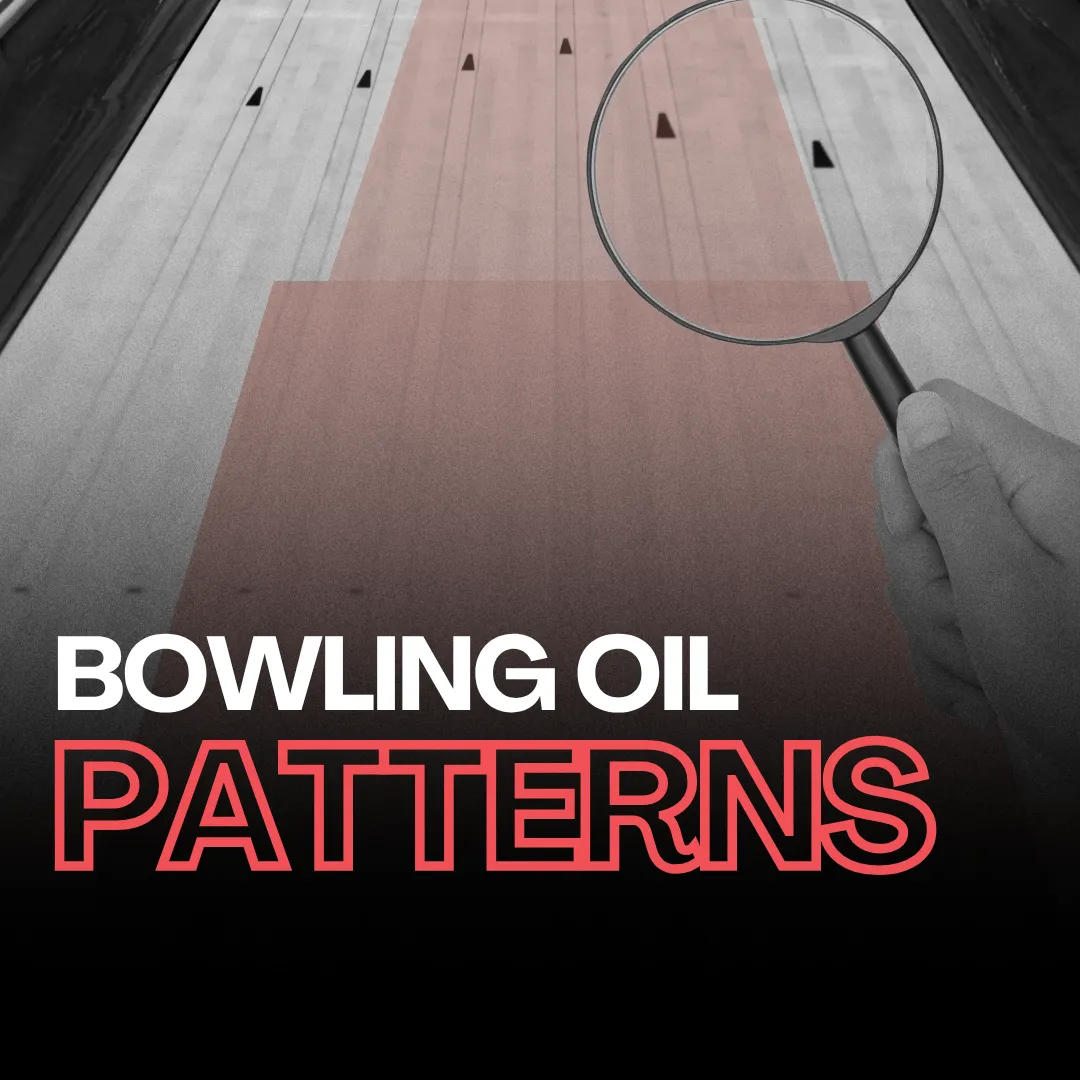
Bowling Oil Patterns: Read the Lanes Like a Pro
Ever wonder why your ball comes back slick and greasy? That’s lane oil - andit changes everything. Bowling lanes use synthetic oil to create differentconditions. These are called bowling oil patterns, and they impactbowling ballmotion. Whether your ball skids too far or hooks too early often depends onthe pattern used that day. In this guide, you’ll learn how oilpatterns work, how to read them, and how they affect your shot. We’ll alsoexplain the difference between house and sport patterns, and how to adjustyour game accordingly. bowling ball What Are Bowling Oil Patterns? Bowling oil patterns show how lane technicians apply oil to the surface. Eachpattern creates a different lane condition.The oil is never spreadevenly. Most patterns use more oil in the middle and less on the outsideboards. This design helps guide your ball toward the pocket - but only if youplay the lane correctly. A standard lane is 60 feet long. However, the oil does not cover the entirelength of the lane. The last portion of the lane is always dry. This dry areahelps the ball grip and hook toward the pins. Lane technitial can use different patterns on each lane. That’s why yousometimes see your ball reacting differently. These differences make lanereading an essential skill - even for casual bowlers. How Do Technicians Apply Oil to a Bowling Lane? In the past, staff used sprays and brooms to apply bowling oil patterns. Ittook time and serious skill. Today, bowling centers use lanemachines that clean and oil the lanes with precision and speed. These machinescreate bowling oil patterns by controlling where and how much oil goes on thelane. Bowling oil protects the surface and creates different lane conditions. Bothare essential for fair and long-lasting play. Bowling Oil Machines Today, every bowling alley uses a bowling oil machine, also called a lanemachine. It cleans the lane and then applies oil to create bowling oilpatterns.First, cleaner heads spray the lane surface. A mixture ofstripper chemical and water breaks down old oil and dirt. At the same time, acloth roll collects larger debris. A vacuum then removes the fluidand waste. During this process, the lane machine travels the full 60 feet ofthe lane. After cleaning, it applies fresh oil in the programmed pattern.Techniciansno longer need sprays or brooms. Everything happens with the push of a button.The lane staff program the machine to set how much oil goes where for thechosen bowling oil patterns. What Oil Do Bowling Alleys Use on Lanes? Manufacturers create bowling lane conditioners specifically for the sport ofbowling. These conditioners combine high-quality oils with additives forconsistent lane performance. They come in different viscositiesand surface densities to create varied lane conditions depending on eachalley’s needs.Lane conditioners must hold their structure whenapplied and also protect the lane, pins, and bowling balls. They are alsonon-toxic and safe for human health, so bowlers can enjoy their pizza withoutworry. Bowling Oil Pattern Types Bowling oil patterns can be classified in several ways. The most common methodis by their length. Bowlers usually group patterns asshort (35 feet or less), medium (between 36-42 feet), orlong (43 feet or more). The oil pattern’s length affects when the ball hooks. Shorterpatterns make the ball hook earlier. short (35 feet or less) medium (between 36-42 feet) long (43 feet or more) House Bowling Oil Patterns Most bowling alleys use special lane patterns called house bowling oilpatterns. These patterns make scoring easier for casual bowlers.Ahouse pattern helps the ball hit the pocket by using more oil in the centerand less outside. Rolling the ball in the middle keeps it straighter forlonger. Rolling it toward the outside allows it to curve back to themiddle.In short, house bowling oil patterns give bowlers moremargin for error and help them hit the pocket more often. Professional Bowling Oil patterns Organizers design professional bowling oil patterns to be more challengingthan house patterns. They make hitting the pocket consistently much harder.Onsport patterns, technicians spread the oil more evenly across the lane. Unlikehouse bowling oil patterns, there is no built-in guide to help your ball. Ifyou miss your target, the ball can easily hook into the gutter. How To Read Bowling Oil Patterns? Knowing how to read bowling oil patterns is crucial for success. It helps youunderstand how to play each lane.There are thousands of differentbowling oil patterns. The Kegel library alone lists over 1,000 options.Mastering them all is impossible, but building a solid foundation is essentialfor effective gameplay. Understanding Bowling Oil Sheet Lane pattern sheets display bowling oil patterns. At first glance, they maylook complex and highly technical.For beginner and intermediatebowlers, two main components matter most. Look at “Oil Pattern Distance” and“Volume Oil Total” listed at the top. These numbers help you choose the rightbowling ball and predict where it will hook at the breakpoint. breakpoint Breakpoint and Exit Point Every bowling oil pattern includes a breakpoint. The breakpoint is where theball moves farthest from the pocket before turning back toward the pins.Thebreakpoint usually appears a few feet past the exit point. The exit point iswhere the oil pattern distance ends on the lane. The Rule of 31 The rule of 31 is nothing new in bowling sport. Many professionals apply it at the highest levels.How doesit work? Standing in the same spot will not work on every oil pattern length.Instead, you must know which board your exit point should be on. That givesyou the best breakpoint for hitting the pocket.To use the Rule of31, subtract 31 from the oil pattern distance on the lane sheet. The resultshows the board where your ball should exit the oil.For example,if the pattern measures 42 feet, subtracting 31 gives 11. Your ball shouldexit at the 11th board. While this rule works best for medium bowling oilpatterns, it also applies to short and long ones. The rule of 31 is nothing new in bowling sport. How to Read Bowling Lane Condition Changes? As bowling oil patterns transition, bowlers must adjust to stay in the pocketand keep scoring. Adjustments may include changing stance, target, ballchoice, speed, or loft. Starting with a stronger ball on a fresh oil pattern creates a smoother hook spot. This gives valuable insight for lateradjustments in ball selection, release, or speed. Always monitor how your ballreacts at the breakpoint and adjust when needed.As lanes breakdown, switch to a weaker ball with less surface or a polished finish. Thisprevents early hook and helps the ball skid farther down the lane. Starting with a stronger ball on a fresh oil pattern Final Thoughts on Bowling Oil Patterns Understanding bowling oil patterns is crucial for improving your game. Readingthe lanes and knowing how oil patterns work leads to more success.Whetheryou are a seasoned pro or a beginner, these insights help you adjust todifferent lane conditions. Use what you learn about bowling oil patterns tobuild confidence, make smart choices, and knock down more pins. FAQ What Is the Purpose of Applying Oil to a Bowling Lane? Oil on the lane has two jobs. It changes lane conditions and protects the lanefrom wear. How Are Bowling Oil Patterns On Bowling Lanes Created In Modern Times? Bowling alleys use bowling oil machines, also called lane machines, are usedin modern bowling alleys. These machines clean the lane with a set cleaner,then add oil based on the programmed pattern. What Kind of Oil Do Bowling Lanes Use, and Why Is It Important? Manufacturers craft bowling lane conditioners for the sport, combininghigh-quality oils with additives. These conditioners maintain structure,protect the lane, pins, andbowling balls, and remain non-toxic and safe for bowlers. bowling balls How Can Bowlers Read and Interpret Bowling Oil Patterns? Bowlers read pattern sheets that show key parts like oil pattern length andtotal oil volume. Bowlers must recognize the breakpoint and exit point toplace shots strategically. What Is the Significance of the "Rule of 31" In Bowling? Bowlers use the "Rule of 31" to determine the exit point based on oil pattern distance. Subtract 31 fromthe pattern length to find the board where your ball should leave the oil. Rule of 31
Tips & Tricks
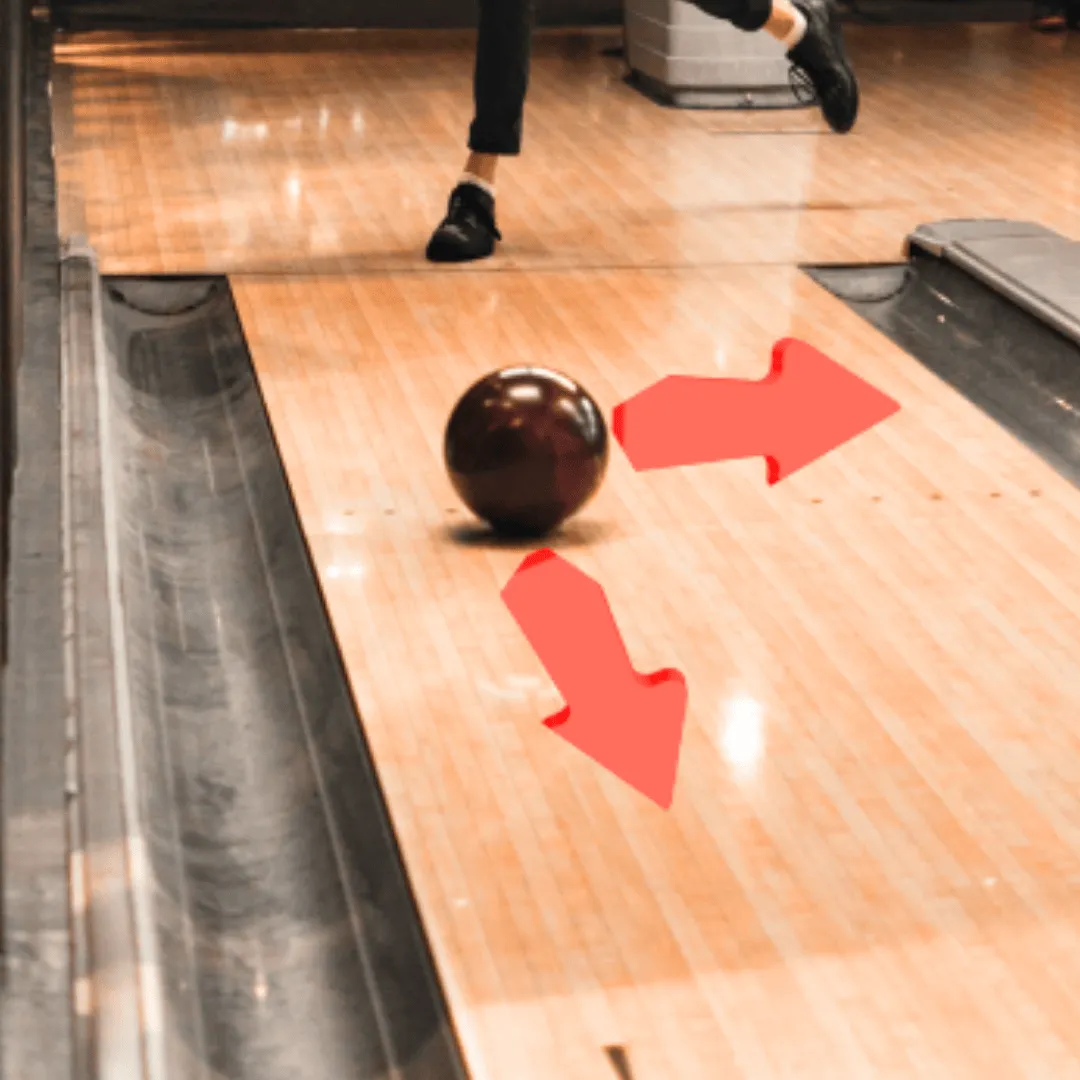
Understanding ball motion | Basics of axis rotation and axis tilt
Bowling is a sport that requires skill, precision, and an understanding of themechanics behind ball motion. Two critical factors that greatly influence thepath a bowling ball takes down the lane are axis rotation and axis tilt. Thesetwo concepts are frequently misinterpreted and misunderstood by many bowlers. Although it may be a challenging subject, this article aims to provide afundamental understanding of what Axis Rotation and Axis Tilt are, how theyare measured, and the significant impact they have on a bowling ball'strajectory. Axis Rotation Axis Rotation refers to the spin applied to a bowling ball during itsdelivery. It determines the orientation of the ball's rotation axis as it rolls down thelane. This rotation can be clockwise or counterclockwise and is usuallydescribed by a numerical value ranging from 0 to 90 degrees. Measuring Axis Rotation Axis Rotation is typically measured by observing the angle at which the ball'score is positioned relative to the horizontal axis. It can be determined by visual inspection of the ball's track marks or byusing advanced tracking systems that analyze ball motion. Axis Tilt Axis Tilt refers to the angle at which a bowling ball is tilted on itsvertical axis while traveling down the lane. It is determined by the inclination of the finger and thumb holes relative tothe ball's vertical axis. Axis Tilt can range from 0 to 90 degrees andinfluences the ball's skid, hook potential, and overall motion. Measuring Axis Tilt Axis Tilt can be measured by examining the angle formed between the ball'strack and the horizontal axis. Similarly to Axis Rotation, this can be done visually or with the help oftracking systems that capture ball motion data. Effects of Axis Rotation and Axis Tilt on Ball Motion Hook Potential. Axis Rotation plays a significant role in the amountof hook or curve a bowling ball generates. A higher degree of rotation willcreate a more aggressive hook pattern, making the ball curve earlier andcover more boards on the lane. Conversely, a lower rotation will result in amore subtle hook.Length of Slide. Axis Tilt affects the length of the ball's slidebefore it begins to hook. A higher tilt angle reduces the ball's contactwith the lane surface, allowing it to skid for a longer distance.Conversely, a lower tilt angle increases friction, causing the ball to starthooking earlier.Ball Path Variation. Combining Axis Rotation and Axis Tilt allowsbowlers to manipulate the ball's path down the lane. Skillful manipulationof these factors can help bowlers adapt to changing lane conditions andincrease their chances of hitting the pocket consistently.Pin Carry. Optimal Axis Rotation and Axis Tilt can improve pin carry,which refers to the ability of the ball to knock down pins effectively. Byadjusting the ball's rotation and tilt, bowlers can optimize pin entryangles and maximize pin carry potential. Hook Potential. Axis Rotation plays a significant role in the amountof hook or curve a bowling ball generates. A higher degree of rotation willcreate a more aggressive hook pattern, making the ball curve earlier andcover more boards on the lane. Conversely, a lower rotation will result in amore subtle hook. Hook Potential. Length of Slide. Axis Tilt affects the length of the ball's slidebefore it begins to hook. A higher tilt angle reduces the ball's contactwith the lane surface, allowing it to skid for a longer distance.Conversely, a lower tilt angle increases friction, causing the ball to starthooking earlier. Length of Slide. Ball Path Variation. Combining Axis Rotation and Axis Tilt allowsbowlers to manipulate the ball's path down the lane. Skillful manipulationof these factors can help bowlers adapt to changing lane conditions andincrease their chances of hitting the pocket consistently. Ball Path Variation. Pin Carry. Optimal Axis Rotation and Axis Tilt can improve pin carry,which refers to the ability of the ball to knock down pins effectively. Byadjusting the ball's rotation and tilt, bowlers can optimize pin entryangles and maximize pin carry potential. Pin Carry Axis Rotation and Axis Tilt are essential aspects of understanding ball motionin bowling. They influence the hook potential, length of slide, ball pathvariation, and pin carry. By mastering these concepts and making the necessaryadjustments, bowlers can enhance their overall performance and adapt todifferent lane conditions. Understanding the interplay between Axis Rotation,Axis Tilt, and lane dynamics can truly elevate a bowler's game to new levelsof precision and consistency.
Tips & Tricks
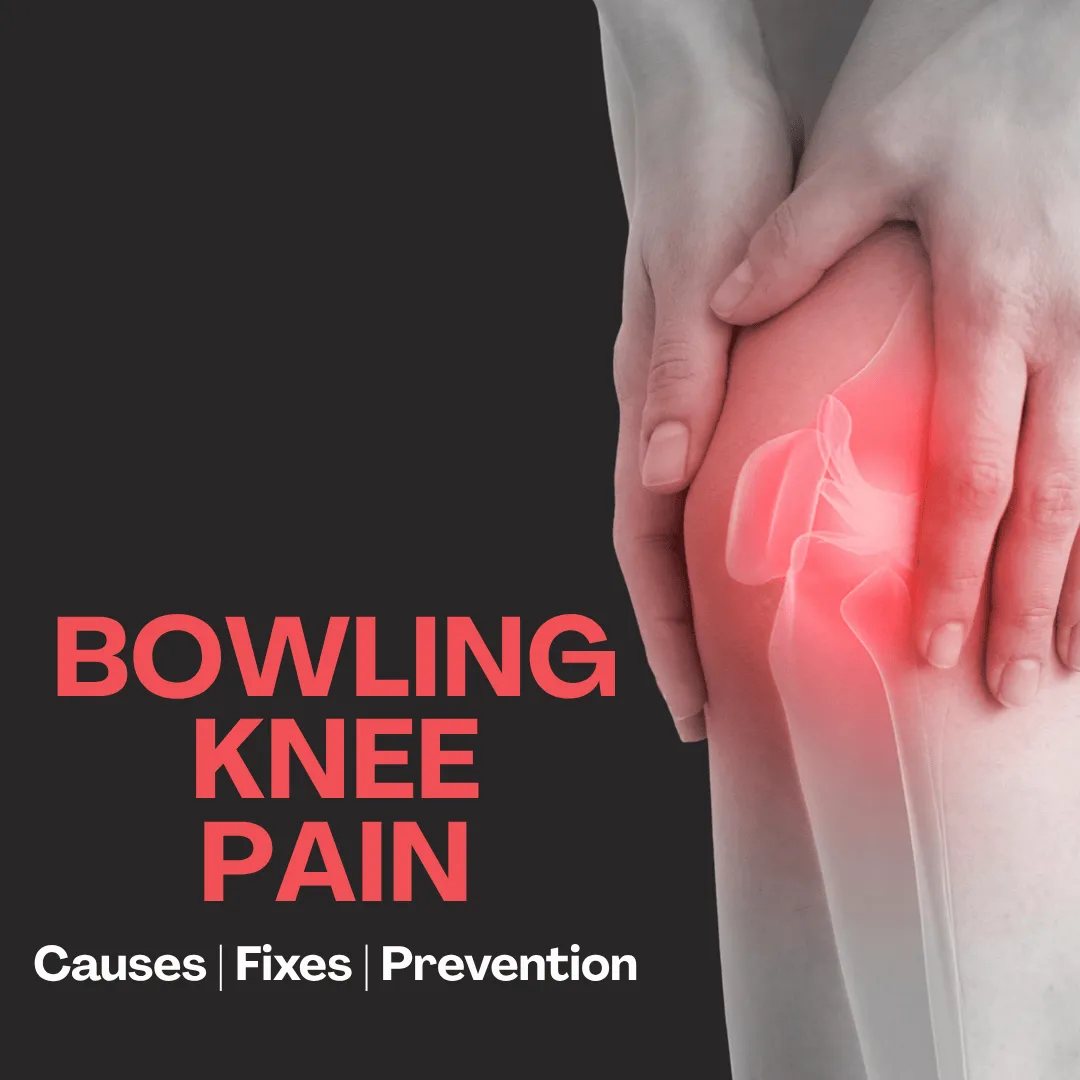
How To Prevent Bowling Knee Pain For Bowlers
Knee injuries are the most common type of injury in bowling. That’s whymany bowlers - no matter their age - wear a knee brace orkinesiology tapeto reduce pain and protect their joints. kinesiology tape But where does bowling knee pain come from? Why is it so common? And whydo so many bowlers eventually need surgery? In this article, we’ll break down what causes bowling knee pain, how bowlingaffects the knees, the most common injuries to watch for, and most importantly - how to prevent knee pain so you can keep bowling without pain.Please note that some links in this article may be affiliate links. Please note that some links in this article may be affiliate links. Why Does Bowling Knee Pain Occur? Bowling knee pain happens because of the stress bowling puts on yourbody. Each shot includes a fast approach, a strong slide, and a sudden stop -all while holding a 7-kilogram ball on a bent front knee. This movement puts heavy pressure on your knee joint. And that’s in a perfect shot. Add poor form, timing issues, or fatigue, andthe strain gets worse. Plus, bowling is a repetitive sport. That means thestress builds over time, often leading to pain. Key Causes of Bowling-Related Knee Pain There are many possible reasons for bowling knee pain, including past injuriesor extra body weight. But some causes are much more common than others. Bad slide The sliding knee takes a lot of force at the foul line. A poor slide can makethat force even worse. Too much slide may cause posterior knee pain, sincebowlers may lunge and lean back during release. Too little slide is evenriskier. Sudden stops with high impact can lead to serious injuries, such asan ACL (anterior cruciate ligament) tear. Overuse Training and competition are important, but too much can cause trouble. Whenknee muscles, tendons, and ligaments get overused, inflammation builds up.This leads to swelling, pain, and missed weeks of bowling. Speed A fast approach can hurt your knee. If your body has to stop suddenly at theline, the knee absorbs too much force. Bowling knee pain often resultswhen speed and a poor slide combine. Slow down, and aim for control, notpower. Bad release position Poor balance or aggressive moves like twisting, turning, or rotating your legcan add stress. Over time, this pressure builds and causes pain in the knee. Common Bowling Knee Injuries Pain is basically a signal from your body that something is not right. Youmust pay great attention here, as bowling knee pain can be caused by somethingfar more serious. Here are the most common injuries and diseases that causebowling knee pain. Patellofemoral Pain Syndrome (a.k.a. Runner's Knee) This is a broad term for several knee issues caused by repeated activity. Itcreates a dull, stinging pain on the inner side of the knee. The pain getsworse when walking, climbing stairs, running, or standing up and sitting down. Runner’s knee is often caused by overuse and frequent bending. Over time, thejoint wears down, muscles overstretch, and the knee becomes weak. Pain oftengoes away with rest, but usually comes back when you resume activity. Patellar Tendinitis This condition occurs due to constant overloading of the patellar ligament,causing micro-tears of the ligament and inflammation. After the onset ofpatellar ligament tendinitis, local pain and swelling at the top of thepatella occur. Local swelling and a burning sensation may come about,especially when kneeling and standing up from a squat position. Meniscal Tear It is a plate of fibrocartilage in the knee joint between the tibia and femurbones. It absorbs shock, helps transfer load, and increases overall stabilityin the knee joint. Meniscal tears can be degenerative or acute, butdegenerative ones are more common in bowling. These usually result fromoveractivity, weak or tight muscles, and poor pre-bowling exercise routines.There’s no quick fix for degenerative tears due to low blood flow in the area.That makes healing slow and gradual, often taking up to six months withoutbowling. Knee Ligament Tear This is another major injury that can happen while bowling. Despite the factthat there are four main ligaments in the knee. ACL (Anterior cruciate ligament) and PCL (Posterior cruciate ligament) - are injured for the mostpart. ACL is located in the front of the knee and is responsible for resistingabnormal forward movement of the tibia. Due to the biomechanics of bowlingsport and sudden stops at the foul line, ACL receives the lion’s share of allligament injuries. PCL is located in the back of the knee, and does theopposite, preventing the tibia from sliding backwards. PCL tear can happenwhen the bowler's slide is too long, making the athlete lean back to keep hisweight centered. Anterior cruciate ligament Posterior cruciate ligament How to Prevent Bowling Knee Pain and Injuries As you've seen, bowling knee pain is often caused by a mix of stress,form issues, and overuse — not just one injury. That’s why prevention matters.Small changes in gear, habits, and technique can keep your knees healthy andpain-free. Here are our top tips for avoiding bowling knee pain. Get your bowling shoes with a good fit Many bowlers invest in new bowling balls before they upgrade their shoes - butthat’s backward. Bowling shoes help with balance, control, and injuryprevention. Look for shoes with interchangeable soles and heels so you canmatch your slide to your game.We've picked some of the best bowling shoes on the market to elevateyour game. We've picked some of the best bowling shoes on the market to elevateyour game Get rid of a bowling sock Bowling socks can make you slide more than you should. They mimic aggressiveslide pads but don’t offer control. Every bowler needs a custom slide, matchedto their form and speed. A proper sole and heel combo does the job better -and safer - than a sock. Maintain your bowling shoes While not in use, shoes must be covered withshoe covers. This rule also applies when walking off the lane, during warm-up, etc. Justdon't forget to take it off before the throw. During the game, the slide padcovers with dust or lane oil residues, so after each throw, it is worthrefreshing it with abowling shoe brush- this way, the slide pad will last much longer.We've made some other high value tips to maintain your shoes in anotherarticle. shoe covers bowling shoe brush We've made some other high value tips to maintain your shoes in anotherarticle. Warm-up and stretch before and after bowling Warm-ups raise your body temperature and get muscles ready to move. Stretchingimproves flexibility and protects your knees from injury. Always warm upfirst, then stretch. This reduces tendon strain and helps prevent bowling kneepain. Maintain your body weight Extra body weight adds more pressure to your knees. Many bowlers are nowrealizing the role of good nutrition and fitness. A healthy weight reducesinjury risk and helps you bowl pain-free for years to come.We've made some helpful nutrition tips for you too. We've made some helpful nutrition tips for you too. Use knee brace or sleeve If you're playing long sessions, extra support can help. A quality knee braceor compression sleeve can reduce swelling, ease pain, and even prevent injury.Modvel Elite Knee Brace provides optimal support and is used byprofessionals during and after exercise.Plus, it comes woth different colors and sizes to fit all. Modvel Elite Knee Brace provides optimal support and is used byprofessionals during and after exercise. FAQ Why do bowlers often experience knee pain? Bowlers often experience bowling knee pain because the sport puts a lotof stress on the knees. Fast footwork, a heavy ball, and sudden stops createhigh pressure on the joints. This pressure gets worse with poor form, fatigue,or overuse. What are common knee injuries in bowling and their impact? The most common injuries linked to bowling knee pain include Runner’sKnee, Patellar Tendinitis, Meniscal Tears, and Ligament Tears. These injuriesoften come from overuse, poor slide mechanics, or lack of stretching. They cancause pain, swelling, and even require long breaks from the sport — or surgeryin severe cases. How do you fix bowling knee pain or injuries? To manage bowling knee pain, rest and ice are great for short-term relief. Inthe long run, it helps to stretch, strengthen key muscles, and improve yourform. Prevention is key — wear proper shoes, avoid using slide socks, warm upproperly, and keep a healthy body weight. What causes inner knee pain in bowlers? If the pain is on the inside of your knee and gets worse when walking,running, or climbing stairs, you may have Patellofemoral Pain Syndrome(Runner’s Knee). It’s a common cause of bowling knee pain, especially if youbowl often or bend your knees a lot. This type of pain often fades with restbut can return once activity resumes. What is the best treatment for knee pain? The best treatment depends on the cause of the pain. Many bowlers managebowling knee pain with a mix of rest, physical therapy, supportive gear,and weight control. More serious injuries may require medical treatment orsurgery. Always consult a healthcare professional for guidance based on yourcondition.
Health & Nutrition
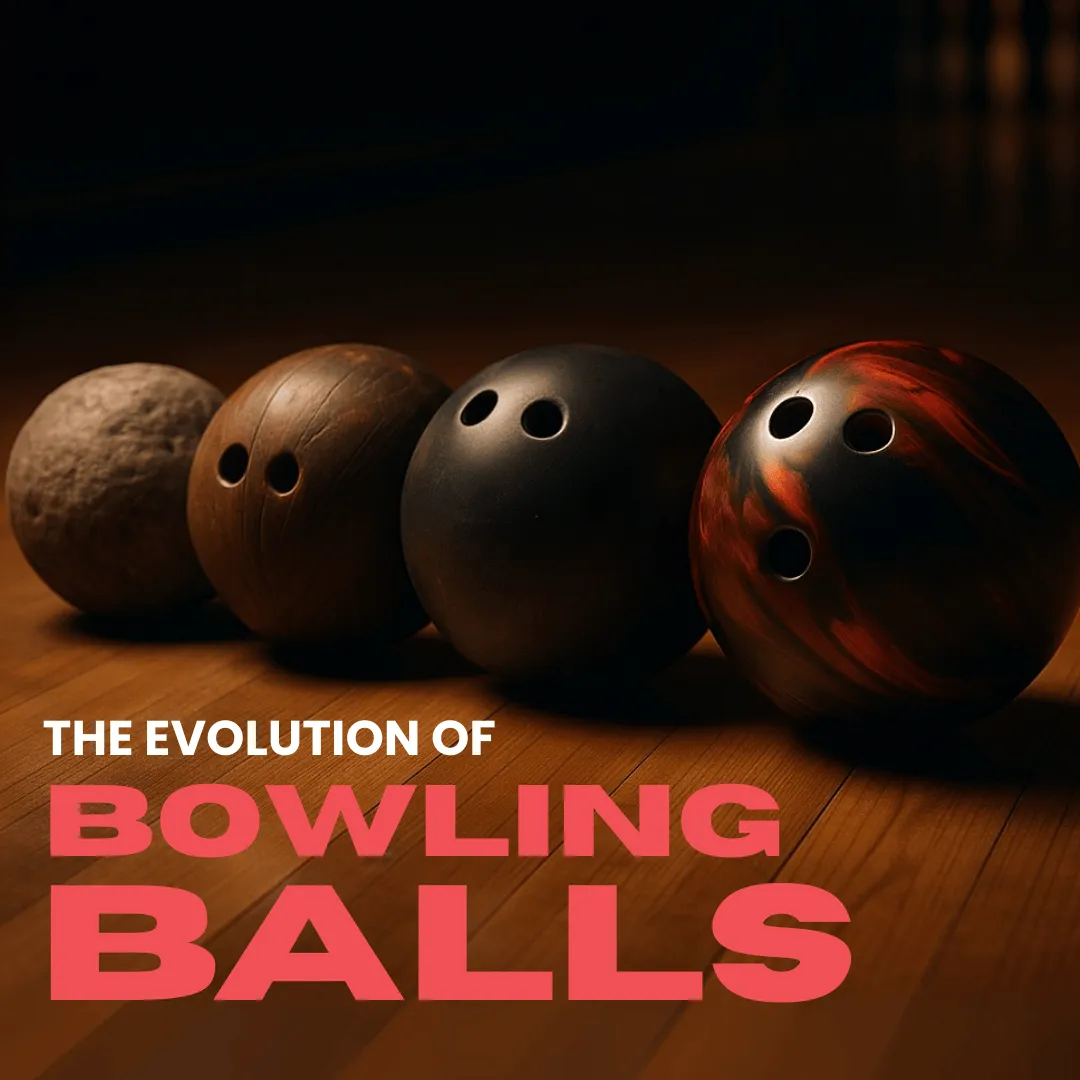
History of Bowling Balls: From Stone to High-Tech Sports Tool
Bowling has come a long way. From rolling stones thousands of years ago towooden balls and today’s high-tech gear with advanced cores and coverstocks,the game has constantly evolved. This time, we’re hopping in thetime machine to explore theHistory of bowling ballsand see how each era shaped the sport we know today. History of bowling balls Stone era: Ancient Egypt (~3200 BC) The earliest bowling balls were carved from stone in Ancient Egypt. Theseheavy spheres had no holes, no cores, or polish - just raw shape and weight. They were used in ritual games and early forms of pin play, proving that theidea of rolling a ball toward targets has been around for thousands of years. Wood era: Before the 1900s By the 1800s, balls were being made from lignum vitae, a dense tropical wood.Many were crafted in two halves, pegged together, and often cracked with use. While they lacked consistency, these wooden balls marked the beginning ofmodern equipment design and represented a huge step forward in the history ofbowling balls. Rubber era: 1905–1960s The introduction of rubber balls changed the sport forever. In 1905, the Evertrue became the first of its kind, followed in 1914 byBrunswick’s Mineralite, which used a secret rubber formula. Rubber balls weresmoother, more durable, and consistent compared to wood. For decades, rubber was the competitive standard, often built with cork cores. Polyester era: 1960s–1980s The 1960s broughtplastic (polyester) bowlingballs. Columbia’s Crown Jewel and other models became popular for their motionand durability. But pros soon complained about the lack of hook. Some bowlerstried chemical soaks to soften covers until safety rules banned such tries. plastic (polyester) Even though stronger hooking balls eventually took over, most bowlers stillkeep a plastic ball in their bag today. Urethane era: 1980s The early 1980s marked another leap forward with urethane. Models like the AMF Angle created more friction and stronger hook potential,especially on shorter or drier lane conditions. Urethane sparked a shift in ball performance expectations and still has aloyal following for its smooth, controllable motion. Reactive resin era: 1990s In the early 1990s, reactive resin covers took over. Balls like the Nu-LineX-Calibur introduced microscopic pores that absorbed oil, creating explosivebackend hook and higher pin carry. This innovation fueled a scoring boom and forever changed how bowlers attackedlane conditions. Reactive resin remains the dominant material in performancebowling today. Modern design: technology meets performance Today’s bowling balls combine engineered coverstocks and advanced cores.Manufacturers fine-tune specs like RG, differential, and surface finish togive bowlers specific options for heavy oil, medium conditions, or dry lanes.Most bowlers now carry 6–12 balls to tournaments, each with a specializedpurpose. Final thoughts From stone to wood, rubber to polyester, urethane to reactive resin, thehistory of bowling balls is the story of constant innovation. Every new material changed the way the game was played and opened newpossibilities for scoring and strategy. Understanding this history makes today’s equipment even more fascinating - andshows just how far the sport has come.
Editorial
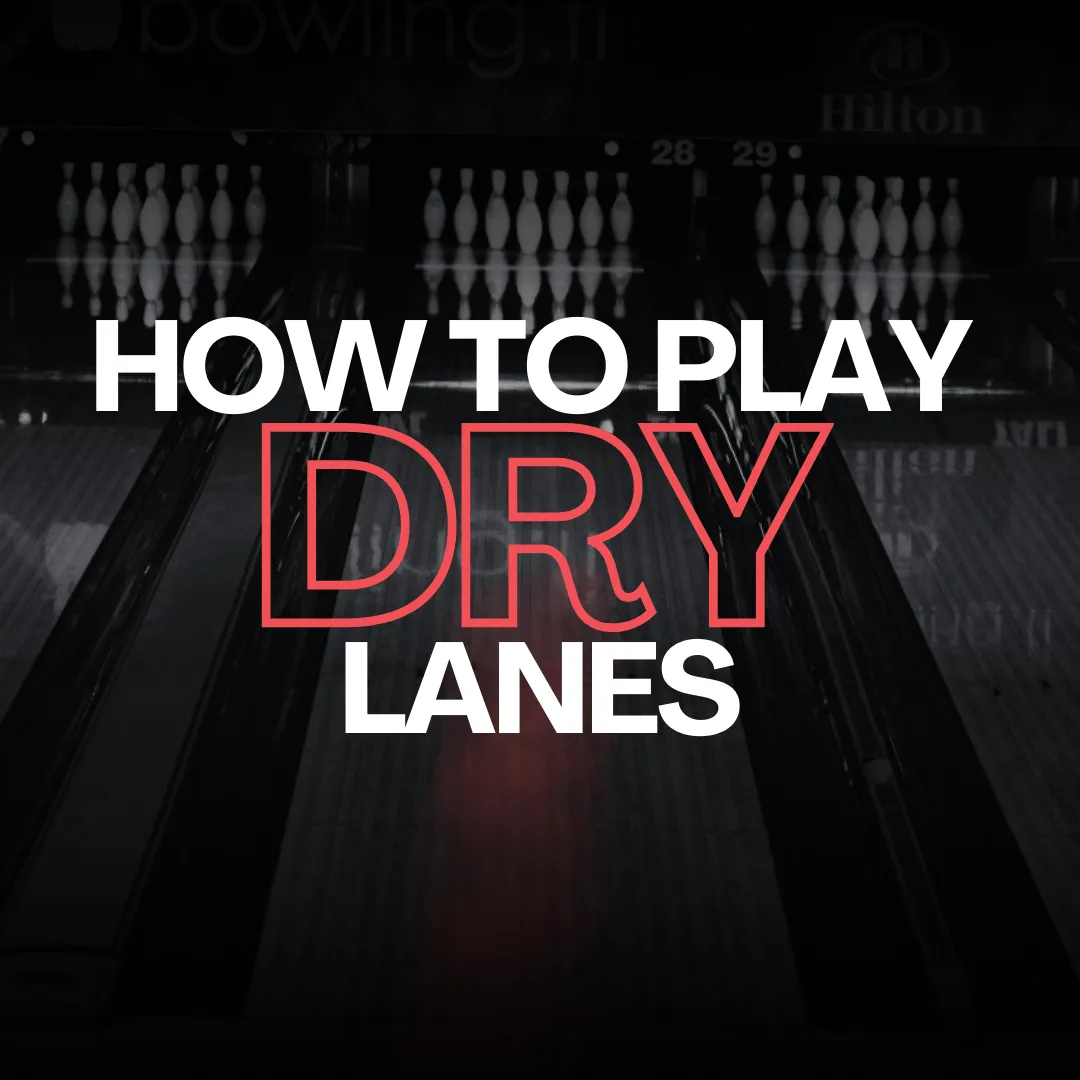
How to Bowl on Dry Lanes - Expert Tips for Bowlers
Many bowlers struggle when the lanes dry out. The ball hooks early, misses thepocket, and becomes tough to control. Knowing how to bowl on dry lanes givesyou an advantage. With the right ball choice, speed adjustments, and targeting, dry conditionscan become manageable. This article covers the key aspects of how to bowl ondry lanes with confidence. Understanding Dry Lanes On dry lanes, friction is high and the ball reacts quickly. A shot thatnormally hits the pocket may now barely touch the head pin. Dry lanes appear for many reasons. First, how fast a lane dries depends on theviscosity of the oil used. Thinner oils move faster, which makes the lane dryout quicker. Short oil patterns also typically have lower volume, so they dryfaster. Lane surface matters too — wooden lanes dry out faster than syntheticones. Even heat and humidity inside the bowling center can accelerate theprocess by evaporating oil. Beginners often enjoy dry lanes because they see more hook than usual, evenwithout high speed or revs. Experienced bowlers, with more power and rotation,usually struggle more. That’s why learning how to bowl on dry lanes is anessential skill for every serious player. How to Bowl on Dry Lanes? 1. Use the Right Bowling Balls Choose weak reactive pearl ball that creates delayed hook. Or, even go withplastic one. Here are some of the best bowling balls for dry lanes: Motiv Max Thrill Pearl - best Motiv bowling ball for dry lanesStorm Typhoon - best Storm bowling ball for dry lanesHammer Purple Pearl Urethane - best urethane bowling ball for dry lanesStorm Mix- best plastic bowling ball for dry lanes Motiv Max Thrill Pearl - best Motiv bowling ball for dry lanes Motiv Max Thrill Pearl - best Motiv bowling ball for dry lanes Storm Typhoon - best Storm bowling ball for dry lanes Storm Typhoon - best Storm bowling ball for dry lanes Hammer Purple Pearl Urethane - best urethane bowling ball for dry lanes Hammer Purple Pearl Urethane - best urethane bowling ball for dry lanes Storm Mix- best plastic bowling ball for dry lanes Storm Mix - best plastic bowling ball for dry lanes Please note that some links in this article may be affiliate links. If youmake a purchase, we may earn a small commission at no extra cost to you.This helps us cover the costs of creating better content for you.When lanes hook early, aggressive reactive balls you normally useon heavy oil become your worst enemy. They grab too soon and lose energybefore reaching the pins. Please note that some links in this article may be affiliate links. If youmake a purchase, we may earn a small commission at no extra cost to you.This helps us cover the costs of creating better content for you. Instead, go weaker. Reactive pearl bowling balls work best, as they skidthrough the front part of the lane and delay the hook. Urethane or evenplastic options also help most bowlers by providing control when the lanefeels wild. Also, look forhigh RG,low differentialdesigns that push the hook further down the lane. A polished surface or a3000–4000 grit finish also helps. high RG low differential 2. Adjust Your Speed and Release One of the best things you can do on dry lanes is increase ball speed. Theeasiest way is to move your feet back on the approach. This naturallyincreases foot speed and forces you to throw the ball a little faster. However, speed alone can create side effects. Adding speed often adds revs,which makes the ball hook just as much. A smart adjustment is to smooth out your release. Stay behind the ball and useless finger rotation for an end-over-end roll. Open your wrist to lower revrate and keep the ball straighter. These subtle changes are a cornerstone of how to bowl on dry lanes withconsistency. 3. Adjust Your Angles Fast On dry lanes, the ball dives left quickly (or right if you are a lefty). Thatmeans you need to move. The rule is simple: move in the direction of yourmiss. For right-handers, missing left means moving left. Use the 2:1 method - two boards with your feet, one with your eyes. On drylanes, larger moves like 4:2 or even 6:3 may be necessary, so don’t be afraidto move more if needed. By moving closer to the center, you may also find moreoil, which helps the ball hold longer. Keep shifting until the ball finds the pocket. Flexibility is often thedifference between just surviving and actually scoring. 4. Surface and Ball Changes On dry lanes, surface prep is critical. Rough finishes like 2000 grit hook tooearly. Instead, polish the cover or use higher grit sanding for added skid. In addition, keep your gear clean. Use abowling ball cleanerbefore and after the game. It helps restore length and reduces overreaction.These simple tools are essential when learning how to bowl on dry lanes. bowling ball cleaner 5. Adjust to the Lane Changes Dry lanes change constantly. Every shot burns more oil, making the lane hookeven earlier. As the transition builds, move deeper inside or switch to weaker equipment.Experienced players sometimes add loft to clear the front part of the lane,though lofting can be difficult for amateur bowlers.Like anyskill, loft takes practice. Controlled loft is one of the most effectivetechniques in how to bowl on dry lanes. The key is awareness. Wait too long to adjust and you’ll leave flat tens orsplits. Adjust quickly and the lane works with you instead of against you. Common Mistakes on Dry Lanes Throwing too slow.Not flattening your hand.Using aggressive equipment designed for heavy oil.Refusing to move deeperwhen the ball hooks early.Ignoring polish, surface prep, and maintenance. Throwing too slow. Not flattening your hand. Using aggressive equipment designed for heavy oil. Refusing to move deeperwhen the ball hooks early. Ignoring polish, surface prep, and maintenance. Avoiding these mistakes is as important as the right adjustments to understand how to bowl on dry lanes. Final Thoughts on How To Bowl on Dry Lanes Dry lanes expose every weakness in your game. They punish over-reaction andreward precision and quick thinking. If you want to master how to bowl on dry lanes, choose weaker balls, adjustyour release, and keep moving to find the pocket. Dry conditions aren’t a curse. They’re a test of patience, awareness, andadaptability. Bowlers who pass that test prove they can score anywhere.
Tips & Tricks
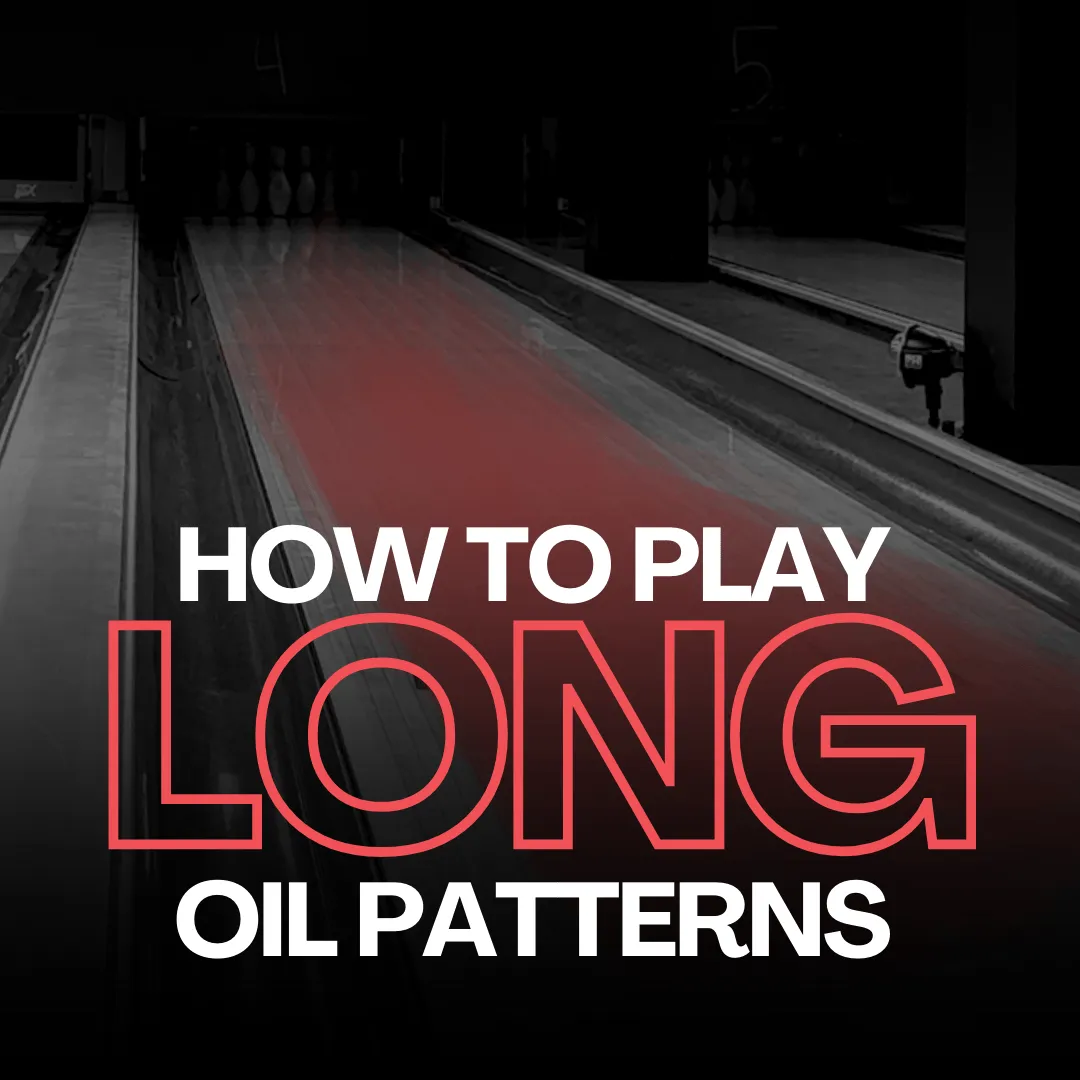
How to Bowl on Long Oil Patterns - Expert Tips
Many bowlers struggle on long oil patterns. The ball skids longer,hooks later, and misses the pocket if you play your usual line. Knowing how tobowl on long oil patterns gives you an advantage. With the right adjustments in equipment, targeting, and angles, you can turn atough condition into a scoring opportunity. In this article, we will cover the key aspects of how to bowl on long oilpatterns so you can approach them with confidence. Please note that some links in this article may be affiliate links. If youmake a purchase, we may earn a small commission at no extra cost to you.This helps us cover the costs of creating better content for you. Understanding Long Oil Patterns Long patterns usually measure over 43 feet. Because the oil stretches fartherdown the lane, bowling ball encounters less friction in the front.The result is a delayed hook and a weaker backend if you rely onwide angles. To stay lined up, you need to bring the breakpointcloser to the pocket and keep your launch angles under control. Mastering how to bowl on long oil patterns starts with understanding thisdifference. How to Play on Long Oil Patterns? 1. Use the Right Bowling Balls Choose strong reactive solid or hybrid balls that create midlane traction.Here are some of the best bowling balls for heavy oil: Motiv Jackal Onyx- most aggressive shape on long oil patternsRoto Grip RST Hyperdrive- most controllable shape on long oil patternsHammer Black Widow 3.0- most popular ball for long oil patterns Motiv Jackal Onyx- most aggressive shape on long oil patterns Motiv Jackal Onyx - most aggressive shape on long oil patterns Roto Grip RST Hyperdrive- most controllable shape on long oil patterns Roto Grip RST Hyperdrive - most controllable shape on long oil patterns Hammer Black Widow 3.0- most popular ball for long oil patterns Hammer Black Widow 3.0 - most popular ball for long oil patterns Moreover, surface helps most on heavy oil. Sand the surface to 2000 grit orlower. UseAbralon padsto sand your bowling balls.Also, choose strong bowling balls, thatare drilled to finish strong. This will deliver both control and pincarry. Pros ofter choose 4 ¾" to 6 ¼" layout spectrum fromtheir PAP when they prepare for how to bowl on long oil patterns. Learn what PAP is in bowling and how it impacts your ball motion. Abralon pads Learn what PAP is in bowling and how it impacts your ball motion. 2. Keep Your Angles Straighter 3. Follow the Rule of 31 The “Rule of 31” helps guide your targeting. Subtract 31 from the pattern lengthto estimate your breakpoint board. For example, on a 45-foot pattern, subtract31. You get 14 - that's your breakpoint on given long oil pattern.You should then target around the 14 board downlane for a startline. Once the game develops, adjust accordingly. This method is a cornerstoneof how to bowl on long oil patterns. Rule of 31 4. Adjust as the Lane Transitions When you play long oil patterns, you might not need to make changes so rapidlylike playing on medium or short oil patterns. Nevertheless, long oil patternsnever stay consistent. Strong sanded balls dry the lane, creatingtransition and cliffs fast. Move your feet and eyes left as the lane breaksdown. Keep your breakpoint inside. Staying too long on your starting line willcause in flat tens or washouts. Knowing how to bowl on long oil patterns meansstaying flexible. 5. Manage Ball Speed Consistant speed is the key to success when playing long oil patterns. Avoidoverpowering the lane with excessive speed. Keep a steady pace to help theball read correctly. Speed adjustments often decide whether yousucceed when learning how to bowl on long oil patterns. Final Thoughts on How To Play Long Oil Patterns If you want to master how to bowl on long oil patterns, think straighter,stronger, and smarter. Play straighter lines, use sanded equipment, and adjust quickly.With patience and good strategy, long oil conditions become farless intimidating.
Tips & Tricks
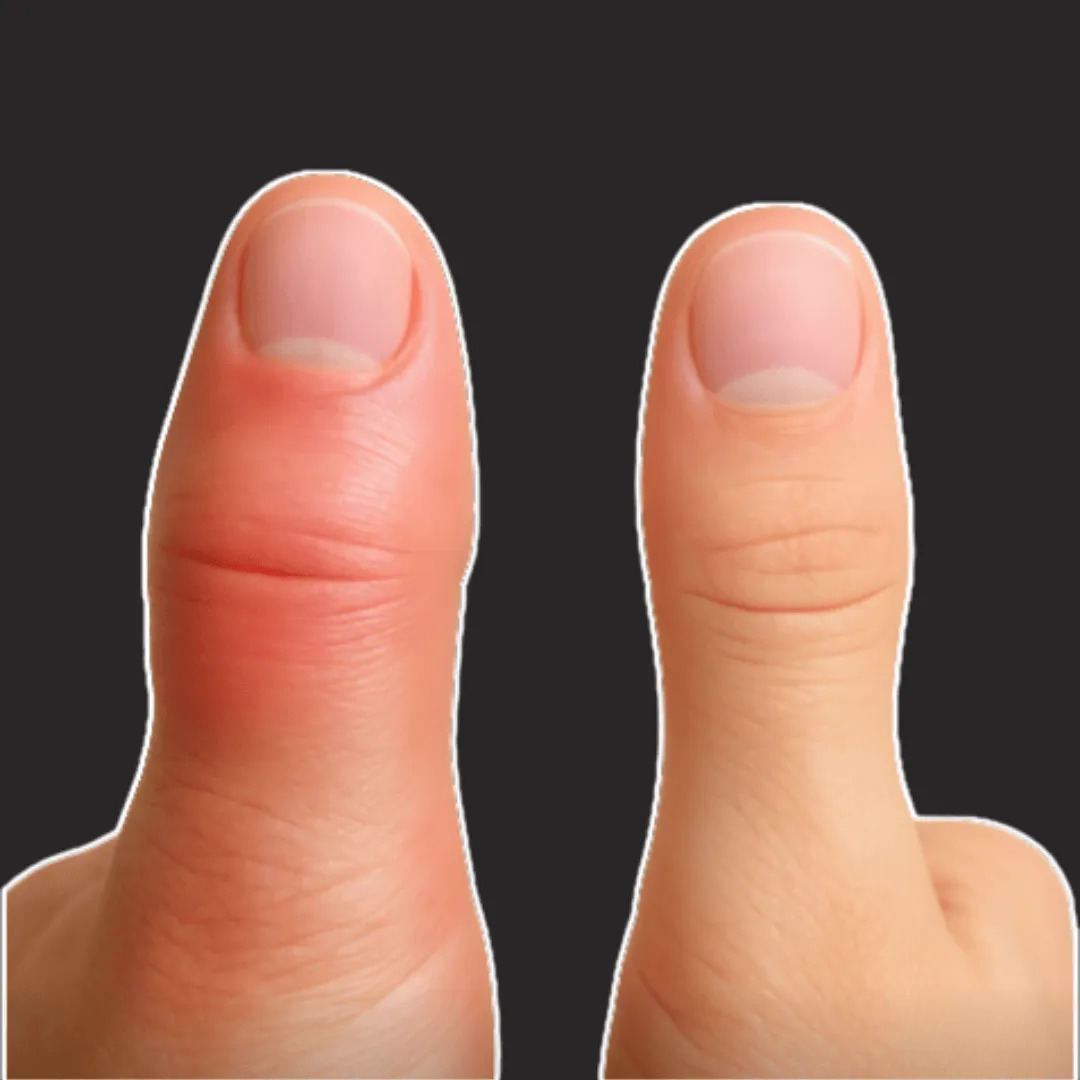
Thumb Swelling in Bowling: Causes, Fixes, and Tips
If your thumb swells during or after bowling, you’re not alone. The author of this article once had such bad swelling that he had to widen his thumbhole just to fit his thumb in. And once it healed, he needed 18! thumb tapes to snug it back up again. So yes - many bowlers deal with this painful, frustrating issue. Thumb swelling in bowling creates inconsistant grip, reduces control, and can even lead to injury. It doesn’t matter if you're a casual league player or a pro - the problem can strike anyone. The good news? Most swelling comes from fixable causes. With smart changes and the right tools, you can keep your thumb healthy and your game strong. In this article, you'll learn how to prevent swelling, when to rest, and what recovery tools really help. Let’s break it down.This article contains affiliate links. If you purchase through them, BowlingLife may earn a small commission at no additional cost to you. It helps us keep producing free, helpful content for bowlers worldwide. This article contains affiliate links. If you purchase through them, BowlingLife may earn a small commission at no additional cost to you. It helps us keep producing free, helpful content for bowlers worldwide. What Causes Thumb Swelling in Bowling? Thumb swelling in bowling happens when your thumb faces too much pressure and friction during play. Every time you grip and release the ball, you create stress on your skin, muscles, and joints. Over time, this leads to inflammation. The tighter the fit, the faster it can happen. Poor ball fit is one of the main reasons bowlers experience swelling. If the thumb hole is too tight, it restricts blood flow. If it's too loose, your thumb can over-grip, creating extra friction. Bowlers who squeeze the ball instead of letting it rest in the hand are more likely to get swelling. Dehydration also plays a role. If your body holds less water, soft tissue tends to swell more under pressure. In short, swelling comes from a mix of tension, poor fit, and stress. The next section covers how to avoid that. How to Avoid Thumb Swelling in Bowling Thumb swelling in bowling is avoidable with the right steps. Get the Perfect Fit First, make sure your ball fits your hand. A proper fit reduces pressure and helps the thumb move cleanly.Visit a pro shop to check the thumb hole size and angle. A custom fit makes a big difference. Avoid Gripping Too Hard Don’t squeeze the ball. A relaxed grip not only reduces tension but also improves accuracy. If you feel like you have to squeeze the ball to keep it from falling off during your throw, your fit might be off. Visit your local pro shop to get it checked. Warm Up Your Hand Before bowling, stretch and warm up your fingers. This increases blood flow and lowers the chance of sudden swelling. Hydrate Before and During Bowling Dehydration is the most common cause of swelling we usually see in bowlers. Since most competitions start in the morning - when lymphatic flow is slower due to lower muscle activity -drinking plenty of water can help reduce swelling more quickly. Aim to drink 1–2 liters of water before competition, and continue sipping small amounts throughout your games. Use Tape Strategically Next, add bowling tape to adjust tightness. You can layer it to match changes in swelling throughout the day. Thumb tape also reduces skin friction and improves release. Take Breaks During Play In long sessions, take breaks between games. Even short rests help your thumb recover and reduce built-up stress. Holding your hand above heart level can also help reduce swelling - this simple trick uses gravity to lower pressure in the blood vessels, encouraging lymphatic drainage. Cool Down After Bowling After play, ice your thumb for 10–15 minutes. This helps with recovery and stops swelling before it starts. These habits protect your hand and help you stay on the lanes longer. Remember - prevention is always easier than recovery. Switch to Two-Handed Just kidding—I couldn’t help myself. But seriously, this will definitely help reduce thumb swelling in bowling once and for all! Best Products to Prevent and Manage Thumb Swelling Best Products to Prevent and Manage Thumb Swelling Along with good habits, the right tools can help reduce thumb swelling in bowling and speed up recovery. 1. Reusable Thumb Ice Pack After bowling, icing your thumb is one of the best ways to reduce swelling and pain. Try this Thumb Wrist Ice Pack. It stays in place and delivers targeted cold (and hot) therapy in minutes. We keep one of these in the freezer at all times. It not only reduce thumb swelling in bowling, but also helps with sore wrist joints after league night. Thumb Wrist Ice Pack Thumb Wrist Ice Pack 2. Bowling Thumb Tape Thumb tape is essential for every bowler who use thumb. It protects your skin, adjusts thumb fit, and prevents swelling during long sessions. We recommend VISE Hada Patch - flexible, breathable, and easy to layer. VISE Hada Patch VISE Hada Patch 3. Hand Massager Using a massage tool boosts blood flow and helps sore fingers recover faster. The Voluart Hand Massager offers deep tissue relief and pressure control. It’s a favorite among athletes dealing with overuse injuries. The Voluart Hand Massager The Voluart Hand Massager No product replaces good grip, but the right tools can help preventthumb swelling in bowling. Combine them with good habits, and your thumb will thank you. FAQ FAQ Why does my thumb swell after bowling? Thumb swelling in bowling often comes from poor fit, tight grip, or overuse.Repetitive pressure builds inflammation in the thumb joint and surrounding tissue. How long does thumb swelling last? It depends on the cause. Mild swelling may go down in a few hours.But if you're bowling often, it may last days without proper care. Can thumb swelling be a sign of injury? Yes. If swelling is sharp, painful, or doesn’t go away, you may have tendon strain or joint irritation. Talk to a doctor before it gets worse. Should I bowl with a swollen thumb? No. Though, it is not always possible. Bowling through swelling may cause further damage. Rest your hand and use tape or ice packs to reduce stress on the joint. What’s the fastest way to reduce thumb swelling after bowling? Use cold therapy right after bowling. Elevate your hand above heart level, drink plenty of water, and use a recovery tools if needed.
Health & Nutrition
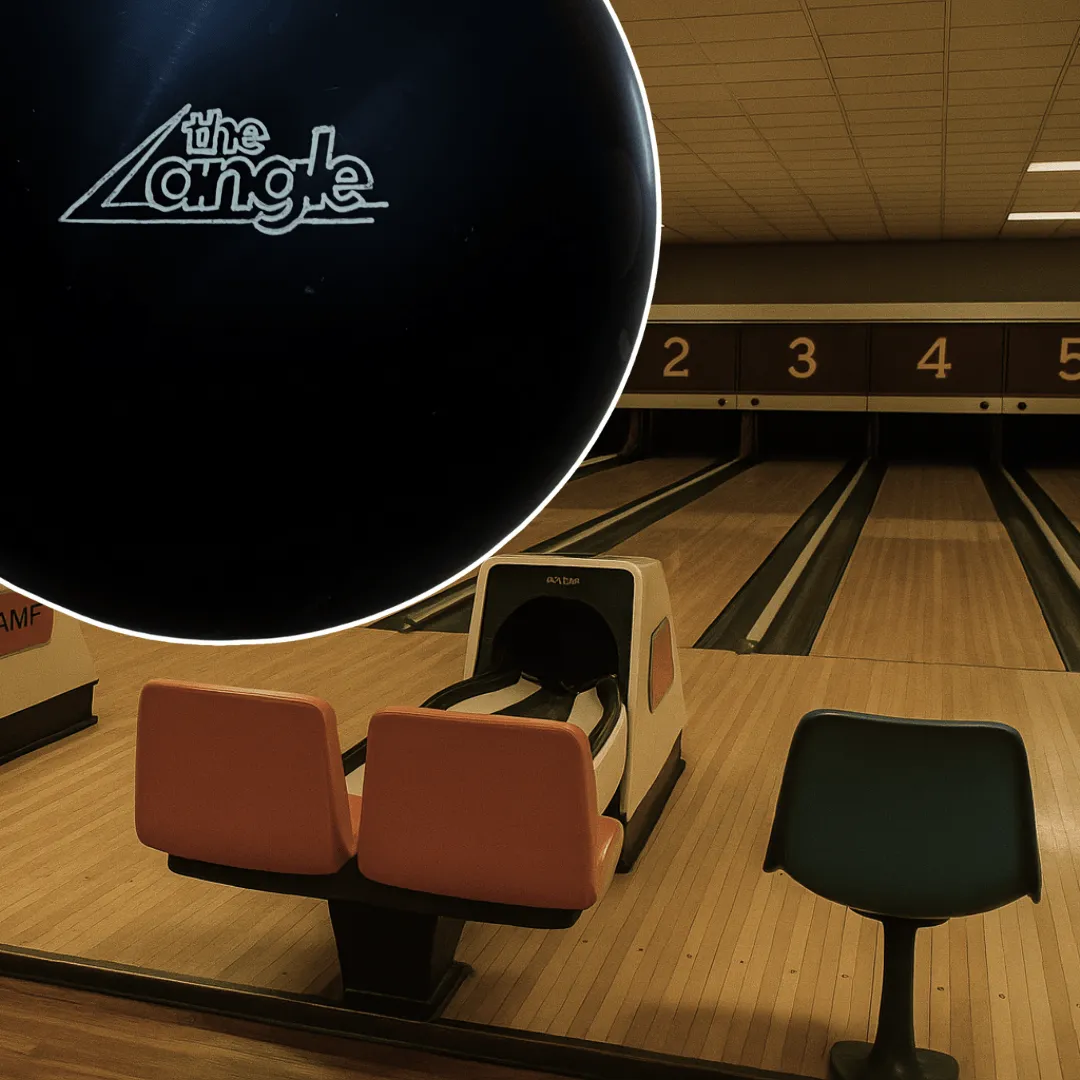
The First Time Bowling Tried to Ban Urethane - And Why It Failed
This article is based on historical information shared by Gary Beck on Facebook, who provided valuable insight into one of the most debated moments in bowling equipment history. This article is based on historical information shared by Gary Beck on Facebook Facebook Facebook , who provided valuable insight into one of the most debated moments in bowling equipment history. This week, the United States Bowling Congress (USBC) released an official statement confirming that it is in advanced talks to ban urethane bowling balls from certified competition. in advanced talks to ban urethane bowling balls in advanced talks to ban urethane bowling balls According to USBC, urethane affects lane pattern integrity, creates possible imbalances in competitive fairness, may limit player development, and presents enforcement challenges due to its softness over time. USBC’s Equipment Specifications Committee is currently reviewing survey feedback and manufacturer input, with a decision expected later in 2025. But this is not the first time the sport faced such a crossroads with urethane bowling balls. Back in 1981, the Professional Bowlers Association (PBA) came very close to banning urethane bowling balls entirely. This wasn’t due to long-term softness or lane integrity concerns, but because of how dramatically the new ball changed performance during competition. By 1974, AMF, a major bowling brand, was struggling with market share. It had shut down its ball factories and outsourced ball production to competitors. Not satisfied with the results, AMF hired Edmond Leary, MIT engineer, to design a new kind of ball that would dominate the lanes. Leary began testing his designs at the 1979 Bowling Proprietors' Association (BPAA) U.S. Open and returned a year later with 36 prototypes, tested by six PBA players. Ten months later, 125 newly built bowling balls were delivered to the 1981 PBA National Championship in Toledo, Ohio. The ball, later named the AMF Angle, was black with a pancake weight block - just like most of the balls on the market. But on the lanes, it was anything but ordinary. It hooked more and hit harder than anything bowlers had used before. Within a month, AMF gave away over 2,000 Angles to players on tour. For free, as a marketing campaign. After that, even bowlers known for throwing straight suddenly were hooking like crazy. The change was hard to ignore. Concerned about how much the ball was impacting scoring, the PBA Tournament Committee had to make a move. In early April 1981, just a yar after AMF Angle was released,all eleven committee members voted unanimously to ban urethane bowling balls. But when the PBA Executive Committee met later that month in Las Vegas, the plan was rejected. The reason was financial. The PBA depended on support from bowling ball manufacturers, and banning urethane would hurt those relationships. So, despite the serious concern, the ban on urethane never became official. The ball stayed on tour. Over time, it changed how equipment was developed and how the game was played. More than 40 years later, the debate continues wether should urethane be banned or not. This article is based on information originally provided by Gary Beck on Facebook. This article is based on information originally provided by Gary Beck on Facebook Gary Beck on Facebook Gary Beck on Facebook .
Editorial
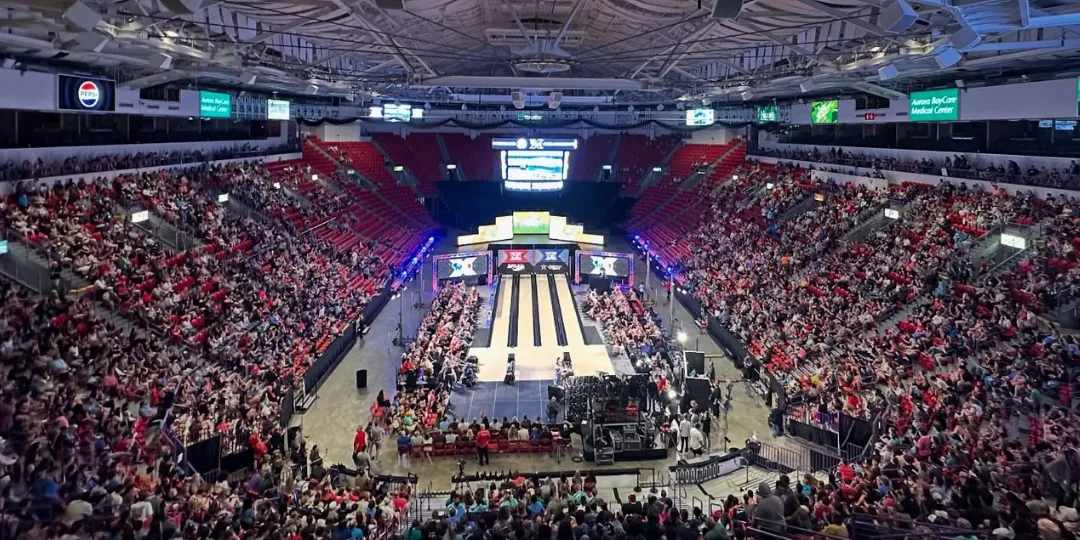
Bowling’s Back in the Arena: The Night It Finally Felt Like a Real Sport Again
The 2025 PWBA Anniversary Open was a massive occasion for bowling. Everyone was talking about it. With so many photos and videos flooding social media, even those who weren’t at the Resch Center on Sunday night could feel like they were part of it. It was a breath of fresh air - just what bowling needed. 2025 PWBA Anniversary Open 2025 PWBA Anniversary Open After WBA, USBC, and BPAA did the math, 6,559 spectators packed the Resch Center - a venue that holds up to 10,200 fans in its standard configuration for basketball, hockey, or indoor football events. That’s over 64% of the seats filled - not too shabby for an event where sitting on the other side of the pin deck (meaning one sector remains unseated) isn’t an option. Of course, the organizers were intentionally aiming for a big crowd: it was an anniversary event, entry was free, several tournaments were merged into one, and thousands of youth bowlers (plus their families) were already in town. It worked. I do wonder what attendance would’ve looked like if it had been a regular PWBA title event. But this piece isn’t about that. This time, let’s take a look back through history - looking at the most attendance-wise successful events, the ones that failed, and reflect on what bowling in arena can mean for the sport. Bowling’s All-Time Attendance Record 6,559 spectators is a lot for bowling - no doubt about that. But it’s not the record. The current attendance record belongs to the other women's bowling event - 2011 U.S. Women’s Open, where 8,017 fans watched the finals inside AT&T Stadium, home of the NFL’s Dallas Cowboys. Built in 2009, the stadium was a perfect fit for bowling. With seating for 80,000, cutting-edge tech, and that “stadium feel,” it gave bowling something it rarely gets - true center-stage energy. Traditional bowling venues typically only fit a few hundred spectators around the lanes and don’t surround players with big-time atmosphere - AT&T Stadium was completely different. The 2011 U.S. Women's Open was a huge success. It smashed the previous record of 7,212 fans, set at Joe Louis Arena in Detroit in 1995 during the BPAA U.S. Open - the most-attended PBA Tour event to this day. So, if I’ve done my math right, the 2025 PWBA Anniversary Open ranks as the third most-attended bowling event in history. Well, at least in modern bowling. It’s followed by the 2004 USBC Masters at Miller Park, which had 4,303 spectators. The BPAA All-Star Tournaments of the 1950s and 60s may have drawn similar numbers - venues like the National Guard Armory in Minneapolis had capacities over 8,000, but without verified public attendance records, those numbers are just speculation. Not Every Bowling In Arena Attempt Worked Stadium-sized bowling events come with big risks. And sometimes, they don’t pay off. After the success of the 2004 Masters at Miller Park, expectations were high. But due to financial limitations and poor turnout in later years, the Masters quickly returned to smaller venues. But in 2007, the organizers took one last shot - bringing the event back to Miller Park. On paper, the timing looked great. The local footbal team played the day after, meaning no sports competition that Sunday. Two lanes were built, four finalists were ready, and 12,000 seats were opened for fans. Everything was in place. Except the crowd. Only 2,712 people showed up, despite tickets ranging from $10 to $75, to watch 25-year-old future Hall-of-Famer Sean Rash win the title and $50,000 top prize. That disappointment left a lasting mark. Since then, no PBA Tour event has returned to a stadium venue - and with Bowlero not focused on arena-style events, there’s little indication that will change soon. But maybe the success in Green Bay will spark some discussions, hope, and courage to change that. Bowling may be a small sport compared to football, basketball, or hockey - sports that fill stadiums every weekend - but it’s big enough to say that the vast majority of people have tried knocking down pins at least once. Big events like the PWBA Anniversary Open are important - not just for fan excitement, but for the sport’s image, growth, and the players themselves. They show what bowling could look like if we all put in just a little more effort. After all, who really wants to sit in a poorly ventilated, rusty bowling alley under a shopping mall for three hours watching bowling without proper seating for fans? We may be small, but we have big hearts. Big enough to fill stadiums. We just need a little more courage to open the big doors - and let the fans walk in.
Editorial